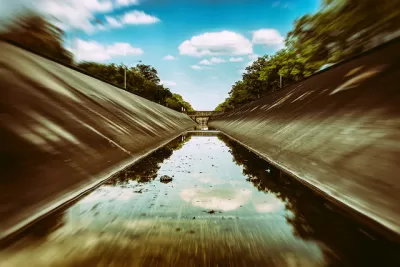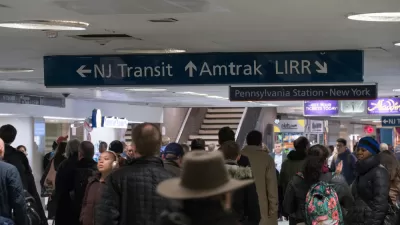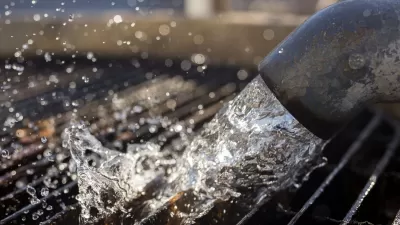The WIFIA federal loans program provides start-up capital to local water infrastructure projects. The program is designed to encourage experimentation and cost-effective construction strategies.

The Trump administration's infrastructure plan remains unclear, especially as press conferences on the subject devolve into controversial (to put it mildly) off-the-cuff remarks on national tragedies. Nevertheless, the Brookings Institution is still looking at how Washington could move forward on infrastructure, and it has identified the EPA's Water Infrastructure Finance and Innovation Act (WIFIA) program as a good bet.
Citing its bipartisan support, Joseph Kane writes, "WIFIA offers greater financial flexibility to a wide variety of utilities, municipalities, and other eligible entities who may lack the capacity to fund water infrastructure upgrades, by helping cover up to 49 percent of project costs and targeting large-scale improvements."
"Unlike federal grants, WIFIA loans depend more on the ability of borrowers to generate revenue, reduce investment risk, and consider other forms of private and nonfederal financing; as a result, it is estimated that the initial federal subsidy can drive more than $2 billion in water loans."
Kane concludes by qualifying all of this. "Time will tell how effective these loans can be in getting projects done nationally, but they mark a step in the right direction at a moment with little to no infrastructure leadership in Washington."
FULL STORY: Despite federal infrastructure cuts, EPA’s WIFIA water loan program holds promise

Maui's Vacation Rental Debate Turns Ugly
Verbal attacks, misinformation campaigns and fistfights plague a high-stakes debate to convert thousands of vacation rentals into long-term housing.

Planetizen Federal Action Tracker
A weekly monitor of how Trump’s orders and actions are impacting planners and planning in America.

In Urban Planning, AI Prompting Could be the New Design Thinking
Creativity has long been key to great urban design. What if we see AI as our new creative partner?

King County Supportive Housing Program Offers Hope for Unhoused Residents
The county is taking a ‘Housing First’ approach that prioritizes getting people into housing, then offering wraparound supportive services.

Researchers Use AI to Get Clearer Picture of US Housing
Analysts are using artificial intelligence to supercharge their research by allowing them to comb through data faster. Though these AI tools can be error prone, they save time and housing researchers are optimistic about the future.

Making Shared Micromobility More Inclusive
Cities and shared mobility system operators can do more to include people with disabilities in planning and operations, per a new report.
Urban Design for Planners 1: Software Tools
This six-course series explores essential urban design concepts using open source software and equips planners with the tools they need to participate fully in the urban design process.
Planning for Universal Design
Learn the tools for implementing Universal Design in planning regulations.
planning NEXT
Appalachian Highlands Housing Partners
Mpact (founded as Rail~Volution)
City of Camden Redevelopment Agency
City of Astoria
City of Portland
City of Laramie




























